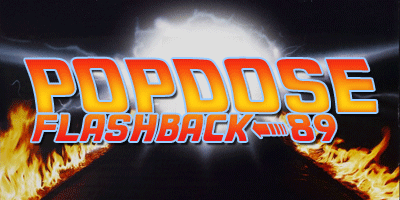
1989 found Elvis Costello in the throes of a full-on identity crisis. He had always been more than what the general perception gave him credit for; some of his earliest recordings were actually of a country-western variety, he had recorded an album of neo-soul (Get Happy!!,) cut a pop tune with Daryl Hall (“The Only Flame in Town”) and also a jazz track that could have put those who made their bones in the genre to shame (“Shipbuilding”) but still, the fans shouted for “Pump It Up” and “Radio Radio.” Perhaps his most obvious pitch for freedom from his alter ego’s tyranny came on the King of America album, credited to The Costello Show, with writing credits going to his birth name, Declan MacManus. The album featured almost all his signature styles in some form or fashion, but in 1986, the audience wasn’t having this de-invention. It would be his last album for Columbia.
 Three years later, in what could only be considered a case of having your cake and eating it too, MacManus returned on a new label, Warner Bros., with a look vaguely similar to his feral Buddy Holly, only this time he was painted like a ghastly harlequin, beheaded, and mounted on a royal blue WB logo frame, a placard beneath the bizarre tableau reading “The Beloved Entertainer.” Here lies the genius of Elvis Costello, giving the public what they wanted AND the middle finger at the same time, for the album Spike is as much a departure as it is a symbol of everything the fans loved about him.
Three years later, in what could only be considered a case of having your cake and eating it too, MacManus returned on a new label, Warner Bros., with a look vaguely similar to his feral Buddy Holly, only this time he was painted like a ghastly harlequin, beheaded, and mounted on a royal blue WB logo frame, a placard beneath the bizarre tableau reading “The Beloved Entertainer.” Here lies the genius of Elvis Costello, giving the public what they wanted AND the middle finger at the same time, for the album Spike is as much a departure as it is a symbol of everything the fans loved about him.
Reteaming with King Of America producer T-Bone Burnett, Costello and Kevin Killen brought a tight and focused sound to the proceedings, starting with the acerbic “…This Town…” where the musical machinations are paired with veddy-British misfit characters, all doomed beneath the chorus’ motto: “You’re nobody t’il everybody in this town thinks you’re a bastard.” EC was back — but ah-ah-ah, not so fast. The second song, a shuffling crime drama based on an infamous incident when Derek Bentley told Chris Craig, in reference to Sidney Miles, to ‘let him have it,’ was a sudden shock to the ear. “Let Him Dangle” recounts the event, the public reaction, and the underlying question: did Bentley mean “shoot him” or “hand over the gun” when he said, ‘let him have it’? This was as far from “Watching the Detectives” as one could get.
The whole album is like this. Sandwiched between the N’awlins torch of “Deep Dark Truthful Mirror” and the sardonic “God’s Comic” is a precise example of jangle pop in the form of the hit “Veronica,” coming from a fruitful collaboration with Paul McCartney. Another example of their work together comes later with the rockabilly number “Pads, Paws and Claws” and even more surface on Macca’s Flowers in the Dirt album, detailed here by fellow Dose-man Jon Cummings.
At the time, I had only been recently introduced to Costello’s music, via my brother-in-law’s cassette of This Year’s Model, which I played into dust. I hadn’t yet understood the full range of Costello’s work, nor was I so deeply indoctrinated into his punk-pop ethos that I would be put off by stylistic tangents. So here I was with this fresh cassette tape, shrinkwrap peeled open and that heavy scent of various oxides hitting my nose like a drunken ballerina, waiting to be blown away on my first listen… And I was, but not in the way you’d expect. I knew I had heard something cool, very literate and worldly in a way few pop recordings could muster, but at the same time I was completely bewildered. It was like finally reading that book Dad loved but always told you that you were too young to appreciate. On that first listen, that was precisely the case because I didn’t get it at all.
At the same time, however, I was compelled to go back because some of those songs were really great. Call those pop nuggets gateway drugs if you must, but they forced me to go back to the album over and over, to find out the backstory and truly read the lyrics. In relatively short time, I was not only hooked but actively seeking the rest of the Costello catalog.
The strength of the album, 20 years later, is all the things the three producers didn’t do versus all the things that were so novel in ’89: the sounds are organic, real instruments versus the synth counterparts that were starting to reach the end of their tenure on the pop scene. Because of a concerted lack of reverb, another signal of the ’80s, the recording has an unplaceable appeal to it. No, it’s not a modern recording, but it certainly doesn’t sound like an ’80s one either. Without these distractions, one is forced to go back to the songs themselves, where the attention was meant to be in the first place. It works. While Costello has gone even farther afield in the following years, it is Spike that uniquely unifies one phase of his career with the next, and marks it as a great starting point for the neophyte fan.

![Reblog this post [with Zemanta]](http://img.zemanta.com/reblog_e.png?x-id=d29ccf75-8f49-4207-a57c-9009c57875fd)



Comments